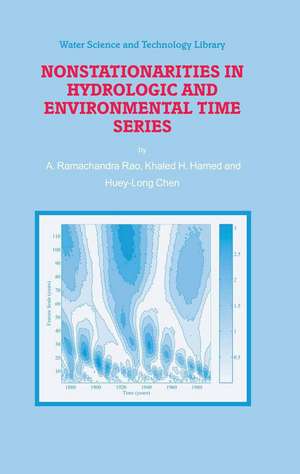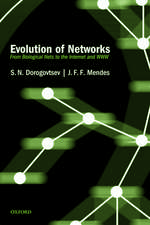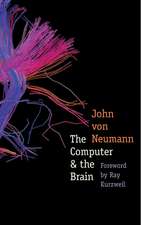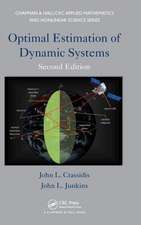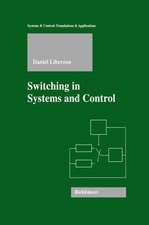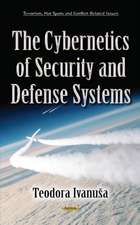Nonstationarities in Hydrologic and Environmental Time Series: Water Science and Technology Library, cartea 45
Autor A.R. Rao, K.H. Hamed, Huey-Long Chenen Limba Engleză Paperback – 14 sep 2012
| Toate formatele și edițiile | Preț | Express |
|---|---|---|
| Paperback (1) | 949.23 lei 6-8 săpt. | |
| SPRINGER NETHERLANDS – 14 sep 2012 | 949.23 lei 6-8 săpt. | |
| Hardback (1) | 958.88 lei 6-8 săpt. | |
| SPRINGER NETHERLANDS – 31 iul 2003 | 958.88 lei 6-8 săpt. |
Din seria Water Science and Technology Library
- 18%
 Preț: 950.96 lei
Preț: 950.96 lei - 15%
 Preț: 646.62 lei
Preț: 646.62 lei - 24%
 Preț: 796.92 lei
Preț: 796.92 lei - 18%
 Preț: 892.90 lei
Preț: 892.90 lei - 18%
 Preț: 953.65 lei
Preț: 953.65 lei -
 Preț: 459.43 lei
Preț: 459.43 lei - 18%
 Preț: 742.31 lei
Preț: 742.31 lei - 18%
 Preț: 1226.11 lei
Preț: 1226.11 lei - 18%
 Preț: 956.50 lei
Preț: 956.50 lei - 18%
 Preț: 1225.48 lei
Preț: 1225.48 lei - 18%
 Preț: 776.40 lei
Preț: 776.40 lei - 18%
 Preț: 1014.76 lei
Preț: 1014.76 lei - 18%
 Preț: 957.13 lei
Preț: 957.13 lei - 24%
 Preț: 744.68 lei
Preț: 744.68 lei - 18%
 Preț: 953.35 lei
Preț: 953.35 lei - 18%
 Preț: 1108.04 lei
Preț: 1108.04 lei - 18%
 Preț: 1121.65 lei
Preț: 1121.65 lei - 15%
 Preț: 644.63 lei
Preț: 644.63 lei - 18%
 Preț: 1116.71 lei
Preț: 1116.71 lei - 18%
 Preț: 731.91 lei
Preț: 731.91 lei - 24%
 Preț: 744.33 lei
Preț: 744.33 lei - 18%
 Preț: 894.46 lei
Preț: 894.46 lei - 18%
 Preț: 1020.74 lei
Preț: 1020.74 lei - 24%
 Preț: 945.42 lei
Preț: 945.42 lei -
 Preț: 553.51 lei
Preț: 553.51 lei - 24%
 Preț: 840.38 lei
Preț: 840.38 lei
Preț: 949.23 lei
Preț vechi: 1157.60 lei
-18% Nou
Puncte Express: 1424
Preț estimativ în valută:
181.66€ • 188.95$ • 149.97£
181.66€ • 188.95$ • 149.97£
Carte tipărită la comandă
Livrare economică 15-29 aprilie
Preluare comenzi: 021 569.72.76
Specificații
ISBN-13: 9789401039796
ISBN-10: 9401039798
Pagini: 396
Ilustrații: XXVII, 365 p.
Dimensiuni: 160 x 240 x 21 mm
Greutate: 0.55 kg
Ediția:2003
Editura: SPRINGER NETHERLANDS
Colecția Springer
Seria Water Science and Technology Library
Locul publicării:Dordrecht, Netherlands
ISBN-10: 9401039798
Pagini: 396
Ilustrații: XXVII, 365 p.
Dimensiuni: 160 x 240 x 21 mm
Greutate: 0.55 kg
Ediția:2003
Editura: SPRINGER NETHERLANDS
Colecția Springer
Seria Water Science and Technology Library
Locul publicării:Dordrecht, Netherlands
Public țintă
ResearchCuprins
1. Introduction.- 2. Data Used in the Book.- 2.1. Hydrologic and Climatic Data.- 2.2. Synthetic and Observed Environmental Data.- 2.3. Observed Data.- 3. Time Domain Analysis.- 3.1. Introduction.- 3.2. Visual Inspection of Time Series.- 3.3. Statistical Tests of Significance.- 3.4. Testing Autocorrelated Data.- 3.5. Application of Trend Tests to Hydrologic Data.- 3.6. Conclusions.- 4. Frequency Domain Analysis.- 4.1. Introduction.- 4.2. Conventional Spectral Analysis.- 4.3. Multi-Taper Method (MTM) of Spectral Analysis.- 4.4. Maximum Entropy Spectral Analysis.- 4.5. Spectral Analysis of Hydrologic and Climatic Data.- 4.6. Discussion of Results.- 4.7. Conclusions.- 5. Time-Frequency Analysis.- 5.1. Introduction.- 5.2. Evolutionary Spectral Analysis.- 5.3. Evolution of Line Components in Hydrologic and Climatic Data.- 5.4. Evolution of Continuous Spectra in Hydrologic and Climatic Data.- 5.5. Conclusions.- 6. Time-Scale Analysis.- 6.1. Introduction.- 6.2. Wavelet Analysis.- 6.3. Wavelet Trend Analysis.- 6.4. Identification of Dominant Scales.- 6.5. Time-Scale Distribution.- 6.6. Behavior of Hydrologic and Climatic Time Series at Different Scales.- 6.7. Conclusions.- 7. Segmentation of Non-Stationary Time Series.- 7.1. Introduction.- 7.2. Tests based on AR Models.- 7.3. A test based on wavelet analysis.- 7.4. Segmentation algorithm.- 7.5. Variations of test statistics with the AR order p.- 7.6. Sensitivity of test statistics for detecting change points.- 7.7. Performances of algorithms with and without boundary optimization.- 7.8. Conclusions about the segmentation algorithm.- 8. Estimation of Turbulent Kinetic Energy Dissipation.- 8.1. Introduction.- 8.2. Multi-taper Spectral Estimation.- 8.3. Batchelor Curve Fitting.- 8.4. Comparison of Spectral Estimation Methods.- 8.5.Batchelor Curve Fitting to Synthetic Series.- 8.6. Conclusions on Batchelor curve fitting.- 9. Segmentation of Observed Data.- 9.1. Introduction.- 9.2. Temperature Gradient Profiles.- 9.3. Conclusions on Segmentation of Temperature Gradient Profiles.- 9.4. Hydrologic Series.- 9.5. Conclusions on Segmentation of Hydrologic Series.- 10. Linearity and Gaussianity Analysis.- 10.1. Introduction.- 10.2. Tests for Gaussianity and Linearity (Hinich, 1982).- 10.3. Testing for Stationary Segments.- 10.4. Conclusions about Testing the Hydrologic Series.- 11. Bayesian Detection of Shifts in Hydrologic Time Series.- 11.1. Introduction.- 11.2. Data Used in this Chapter.- 11.3. A Bayesian Method to Detect Shifts in Data.- 11.4. Discussion of Results.- 11.5. Conclusions.- 12. References.- 13. Index.
Recenzii
From the reviews:
"The authors consider a number of modern statistical tests of nonstationarity, including trend analysis, multitaper method and maximum entropy spectral analysis, evolutionary spectral analysis, wavelet analysis, and series segmentation through change point detection. … this book is well organized and easy to read … . A clear distinction is made between processes with discrete, continuous, and mixed spectra … . Nonstationarities in Hydrologic and Environmental Time Series addresses a number of important issues and ideas … ." (Adam Monahan, Bulletin of the American Meteorological Society, March, 2005)
"The authors consider a number of modern statistical tests of nonstationarity, including trend analysis, multitaper method and maximum entropy spectral analysis, evolutionary spectral analysis, wavelet analysis, and series segmentation through change point detection. … this book is well organized and easy to read … . A clear distinction is made between processes with discrete, continuous, and mixed spectra … . Nonstationarities in Hydrologic and Environmental Time Series addresses a number of important issues and ideas … ." (Adam Monahan, Bulletin of the American Meteorological Society, March, 2005)
